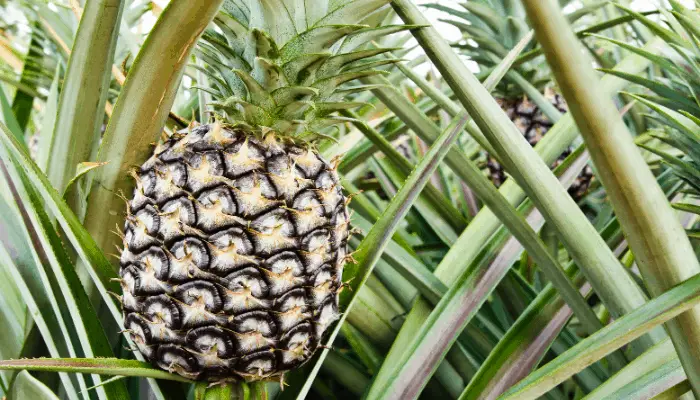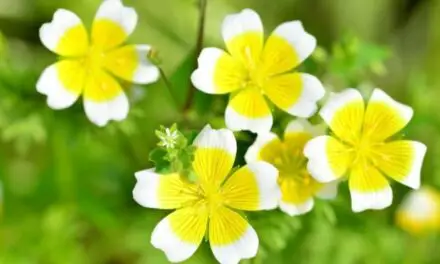Pineapple plants are succulents because they have all the traits of succulents, including, having adapted to thrive in a dry environment, their production of edible fruits, their resemblance to other succulents, thick leaves, flower growth, and need for sunlight. These traits make pineapple plants prime examples of succulents.
Related Article: Is A Succulent A Desert Plant?
Table of Contents
What Makes A Pineapple A Succulent?

It has often been wondered whether pineapples can be classified as succulents or not; the answer is yes.
Pineapple plants are excellent examples of succulent plants due to a number of various factors, such as:
- The type of flesh they have.
- The kind of fruit they produce.
- The kind of conditions in which they can survive as a species.
Factors such as the way they can be propagated also demonstrates how they are indeed a variation of a succulent.
Here is a quick outline to help you understand why pineapples are considered succulents.
But first, what exactly are succulents?
In order to understand how pineapples can be succulents, it is helpful first to evaluate what it means to be a succulent.
A succulent is a plant that has thickened and rather fleshy parts to help it store water.
As you may have guessed, succulents generally grow in areas where there is water scarcity, for example, cacti are predominantly present in the arid desert environment.
Along with their rough physical aspects, one of the most distant traits of succulents is the fact that they often grow edible fruit.
Succulents bear fruit that is known to have a higher water content than others.
Succulents, just like as cacti, often (but not always) grow fruit.
How Are Pineapples Succulents?
Pineapples, scientifically known as ‘ananas comosus’, hail from the tropical Bromeliaceae family.
Plants from this particular family are known for their growth within trees, and the fact that they can absorb nutrients from their leaves.
Here is a detailed overview to help answer your question of whether ‘are pineapples succulents?’
The Presence Of Edible Fruit
Pineapple plants come under the umbrella term of succulent plants due to the fact that their fruit is edible.
Moreover, pineapples are extremely juicy and thus reflect the fruit normally grown by many succulents, including some cacti species.
Place Of Growth
Pineapples generally grow in a tropical landscape where the soil tends to be well-drained, they are known to be able to withstand conditions of water scarcity, such as droughts.
This is a trait they share with most succulents.
Moreover, as established previously, many succulents grow in places of low water availability, which impacts their appearance.
Appearance
Pineapples, like most succulents, have a short, thick, and spiky appearance, with a tough and rather fleshy exterior that helps prevent excessive loss of water.
Moreover, they grow in a spiral formation, forming rosettes that can go up to more than a meter in height.
And this proves to be an excellent base for storing water.
Thick Leaves
Like most succulents that hold and retain water, pineapple plants have thick leaves and rough-textured fruit.
These traits not only help to retain water, but also protect it from unwanted predators and organisms that may damage the whole plant during their search for food.
Flower Growth
Another reason why pineapples are considered succulents is the tendency for them to grow a flower spike on their surface.
This will prove to be the basis of the stiff spine that would hold up the heavy pineapple fruit.
Need For The Sun
It is not difficult to grasp the idea that pineapples, like most succulents, require constant exposure to sunlight.
The key that allows them to thrive is for them to be on the receiving end of plenty of direct sunlight.
Pineapples do not fare well in cold conditions.
Plant Propagation
The propagation of the pineapple plant is interesting as it literally stems directly from the fruit or the parent plant itself.
Placing such a cross-section of the pineapple plant in well-drained and un-waterlogged soil would encourage the growth of the essential roots, and allow the plant to propagate.
As you have seen there is a wide variety of reasons that attest to the fact that the pineapple plant, despite it essentially being a tropical plant, is indeed a succulent.
Conclusion
As you have seen, pineapples can be thought of as good examples of succulent plants.
This is due to the fact that they have the characteristics, succulent edible fruits, and a fleshy texture that helps them retain water.
Moreover, though they grow in tropical lands with well-drained soil conditions, they are able to withstand conditions of drought, like many other good succulent plants.




